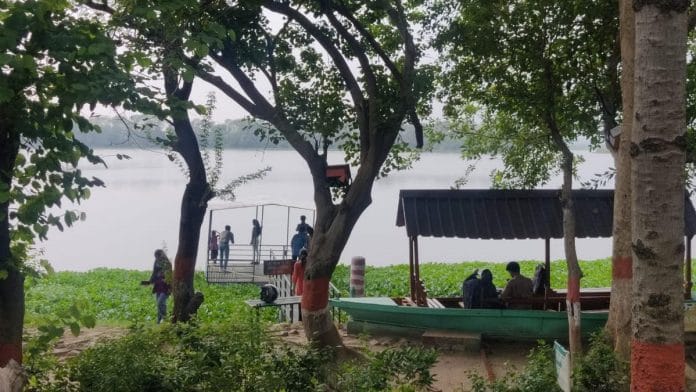Noida: On a cold December morning, Wing Commander Vijay K Sethi and his wife Meena took an unmarked road near Okhla Barrage in Noida and stumbled upon a breathtaking sight. A reservoir teeming with ducks, gulls, and flamingos, packed so densely the water seemed to move. That was in 2005, and hooked from that first trip, Sethi kept returning with camera and binoculars in hand. But now, this green lung and bird haven of Noida is in trouble.
Years of unchecked urbanisation, tree felling, illegal construction, and mismanagement have turned the Okhla Bird Sanctuary into a battleground of legal wrangling, bureaucratic neglect, and fading biodiversity. Bird numbers have dropped, habitats have degraded, and despite court orders aimed at protecting the sanctuary, enforcement remains weak.
“At Okhla Bird Sanctuary, the focus has shifted from the welfare of the birds to prioritising the comfort of visitors. In my firm belief, the highest priority must always be the birds themselves, not the visitors or even the birdwatchers. It feels more like a place for ‘lovebirds’ than for the actual birds,” said Anand Arya, a birder, environmentalist, and photographer. He has spent decades watching over urban bird habitats and has been a strong voice for the sanctuary in Gautam Buddha Nagar, sending reports to authorities and raising awareness about the dangers birds face.
As Noida marks 50 years of breakneck development, Okhla Bird Sanctuary remains one of its last surviving oases—a fragile stretch of wetland on the border with Delhi, hemmed in by expressways, housing towers, and a skyline dominated by cranes. Tucked along the Yamuna, the 4-square-kilometre site was declared a protected area in 1990 under the Wildlife Protection Act. Today, it’s one of just about half a dozen bird sanctuaries in NCR and part of India’s 466 designated Important Bird Areas (IBAs).
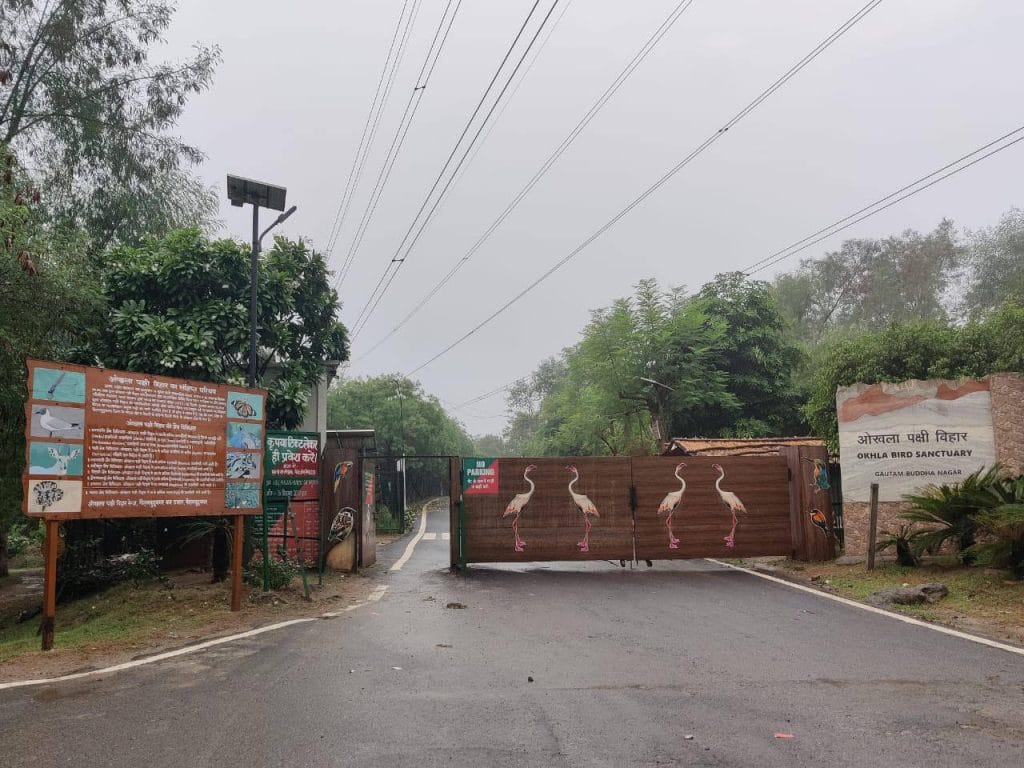
For a city choked by dust and traffic, the sanctuary has offered rare relief not just for over 300 species of resident and migratory birds, but also for Noida’s weary residents. Birdwatchers, joggers, school groups, and solitude-seekers come here for a pause, a bit of quiet, a glimpse of nature amid the urban sprawl.
“Migratory ducks—shovelers, pintails—filled every corner. I’ve never seen such numbers before or since,” said Sethi, reminiscing about Okhla Bird Sanctuary as it once was. “Once, I paddled up to 300 flamingos, and it was a wonderful sight. The bund teemed with sandpipers, bitterns, owls, and red munias. A staircase led into the marsh and a forest where golden orioles nested, before it became a manicured park.”
The sanctuary’s official website still paints a picture of a thriving ecosystem, teeming with kingfishers, painted storks, herons, and more. But step in during the dry months and sightings are more likely to be of cattle and constructions.
While the sanctuary website claims there are over 320 bird species here, data from the Asian Waterbird Census, conducted each January, shows a sharp decline in both numbers and diversity. In 2019, the sanctuary recorded 12,211 birds across 63 species; in 2024, that had dropped to 3,380 birds across just 32 species.
Also Read: At 50, Noida doesn’t know what it wants to be—cosmopolitan city or industrial utopia
Walls in the wetland
A narrow road winds past the watchtowers, ending at a cremation ground still used by nearby villagers. Inside the sanctuary, buffaloes lounge in the grass or wade into the water during the rains, ignoring their owners’ distant calls. Close to the entrance are five concrete rooms, four of them locked. But in one, a woman in her early 30s relaxes on a mattress in front of a cooler with her two children. She says they’ve been living there for months and that her husband works in the sanctuary.
In December 2024, the National Green Tribunal (NGT) heard a petition by Yogesh Kumar and advocate Nisha Rai, raising concerns over these illegal permanent constructions inside the sanctuary. Kumar alleged that structures were being built in violation of sanctuary rules, threatening the area’s fragile ecology.
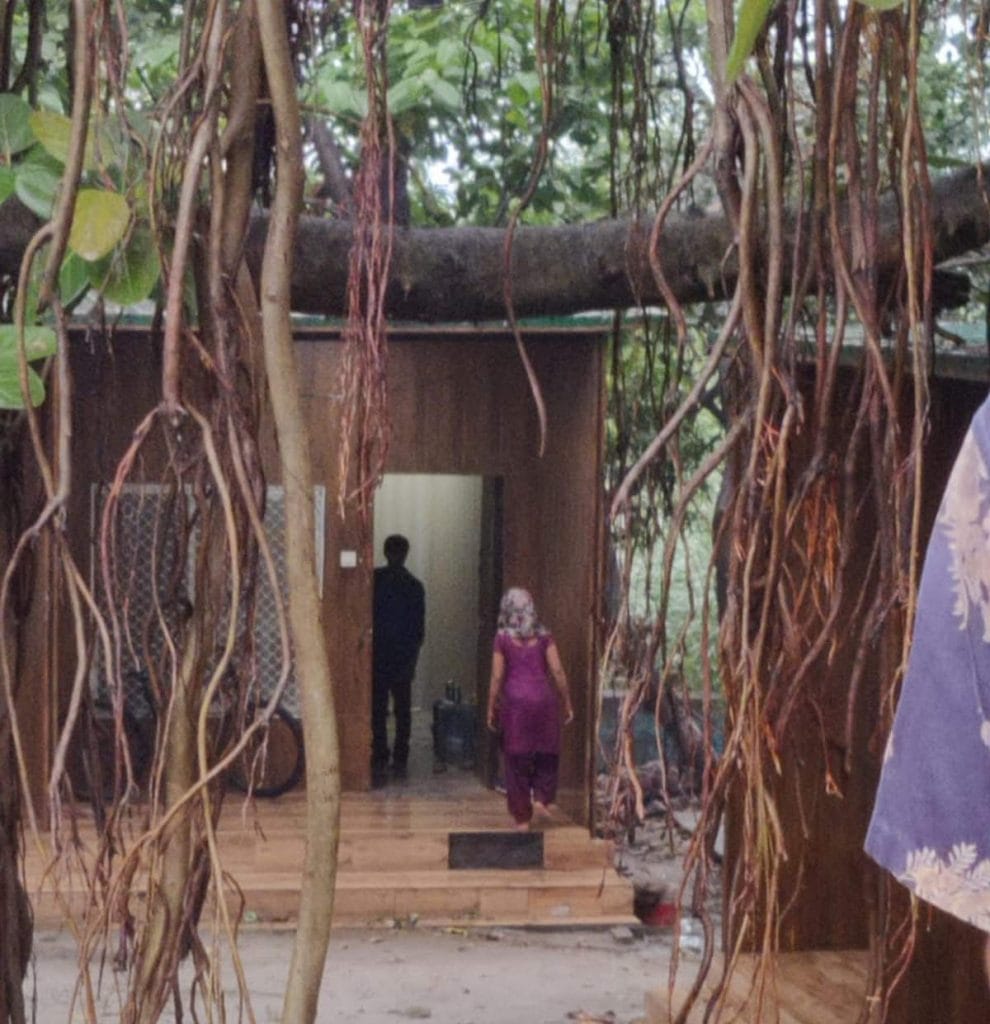
“We filed the case in March 2024 after noticing that a sandy road leading to the Bund area inside Okhla Bird Sanctuary was being concretised,” said Rai. “That road should have remained unpaved—vehicles disturb the birds. When [there are deaths], the cremation ground becomes busy with vehicles passing through. Now, birdwatching there is impossible.”
The Uttar Pradesh Forest Department admitted to putting up six temporary huts, stating these were approved under the sanctuary’s 2022–2032 Management Plan. It also acknowledged that road construction had begun but claimed the work was stopped and the road dismantled.
Former divisional forest officer (DFO) HV Girish, now conservator of forests with the Wildlife Crime Control Bureau (WCCB), said that during his tenure, he drew up a Rs 90-100 crore plan to revamp the park, which was approved by the central government and inaugurated by a Cabinet minister.
“The plan was ambitious, featuring a modern cafeteria for visitors, a digital interpretation centre for children, and a visionary approach to integrate Okhla Bird Sanctuary with Mayawati Park and Kalindi Park,” he said.
The cafeteria was built but shut down last year. According to Girish, the rooms now used by sanctuary staff were repurposed without his knowledge.
They installed water coolers and toilets, but there’s no water and toilets don’t even have a door. How can a woman use that? In the name of creating awareness, nature walks are done in the most unprofessional way, without the intent to conserve or preserve
-Nisha Rai, advocate and birder
“The structure consists of five fully built concrete rooms, wrongly presented now as ‘activity rooms for schoolchildren’,” said TK Roy, an ecologist, ornithologist and conservationist. “In reality, these are tourist huts, illegally constructed in clear violation of the Wildlife Protection Act, 1972 and the Supreme Court’s 2010 judgment [on constructions on forest land]. Photographic evidence, along with the Forest Department’s original fund request and MoEFCC’s sanction letter releasing central grants, confirm this.”
According to a well-known birdwatcher active in Delhi’s birding circles, who wished to remain anonymous, the rooms have existed for 7-8 years, but their purpose remains unclear. He also questioned the sanctuary’s ticketing system, claiming that many visitors, especially morning walkers, enter without tickets.
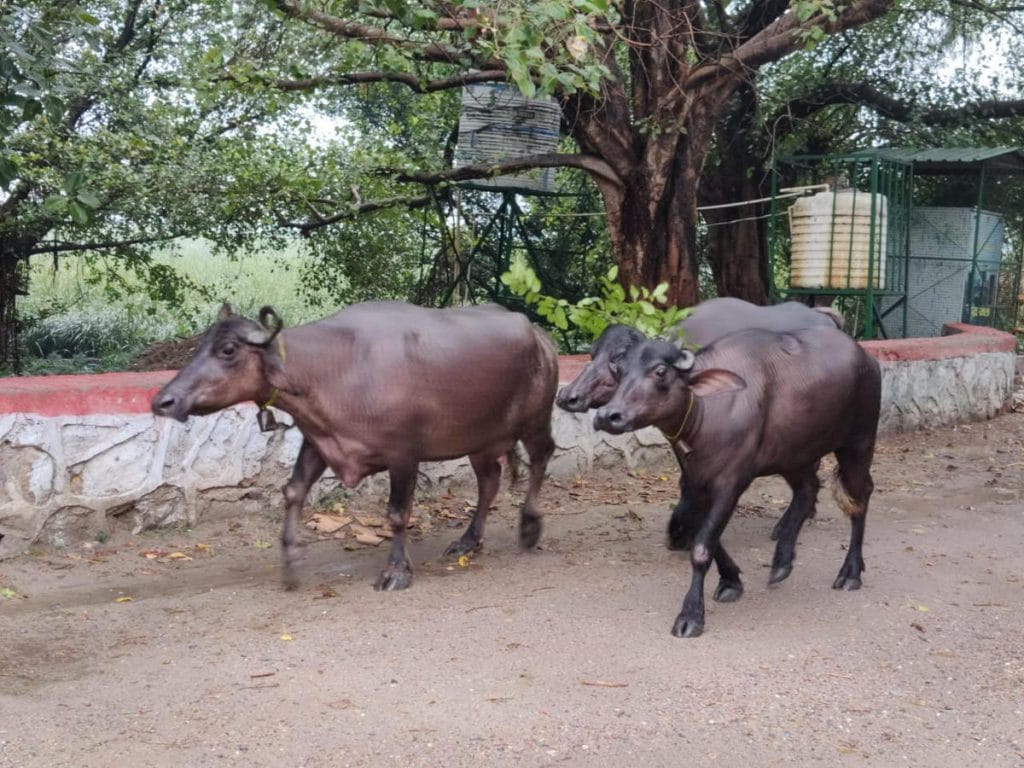
DFO PK Srivastava, however, pointed to a rise in bona fide visitors. He said footfall has steadily increased since he took charge in 2018. The number rose from 24,833 in 2017-18 to 1,12,022 in 2024–25.
“Today, the OBS is the most visited ecotourism site in Uttar Pradesh. It brings us great pride that our team’s consistent efforts have helped turn it into a thriving habitat. Both residents and tourists visit in large numbers. Gautam Buddha Nagar now balances urban development with rich biodiversity,” added Srivastava. “Along with Okhla, we have Surajpur Wetland in Greater Noida and Dhanauri Wetland near Dankaur. We are working to improve and promote these areas further.”
But birdwatchers aren’t exactly fans of the way the park is being stewarded.
‘It’s become a racket’
Allegations of mismanagement are swirling around the sanctuary, particularly during the tenure of Srivastava, who has held various posts there for decades.
“In 25 years, no one’s been able to hold him (DFO) accountable. He’s about to retire in July 2027, but remarkably, he’s stayed in Noida and Greater Noida for over two decades while all DFOs and other officers are rotated out every three years as per UP Forest Service Rules,” said Roy who has been visiting the sanctuary since 1998 and worked as a freelance ecologist and environmentalist. For over a decade, he conducted weekly biodiversity surveys under the Okhla Bird Sanctuary Management Plan (2011-12 to 2021-22), submitting official monthly reports on the sanctuary’s current biodiversity, conservation efforts, and management needs.
While there is no formal upper limit to a DFO’s tenure in one posting, rotations every two to four years are typical. At Okhla Bird Sanctuary, Srivastava has held charge for about seven years; his predecessor Girish’s tenure was from 2014 to 2018.
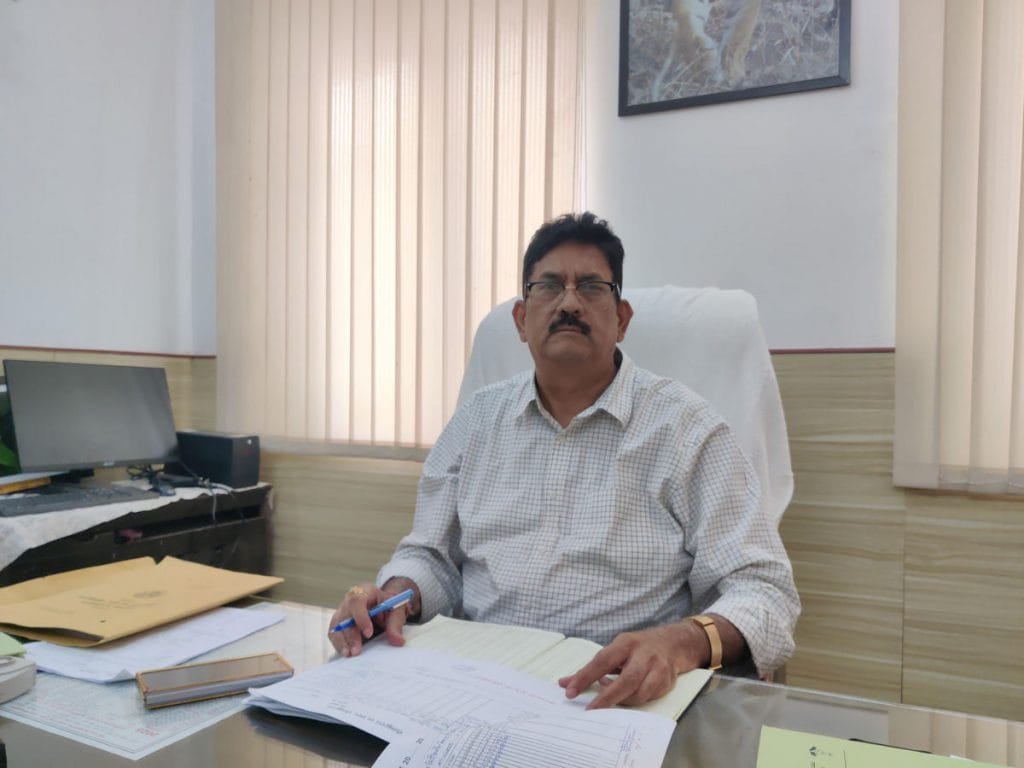
Other appointments have also raised questions.
In 2024, a birdwatcher filed a Right to Information (RTI) application seeking details on the postings of forest officers posted in the Gautam Budh Nagar division. These included Srivastava (who has served as forest range officer, assistant conservator of forests, and now DFO), Satender Singh (forester), Kaushik (forester), and Sikander (forest guard). The response, given by the “Public Information Officer/Divisional Forest Officer”, stated that only one forester post is sanctioned at the Okhla Bird Sanctuary. Yet, this seems to have been violated. Forester Singh was transferred in 2022, but the order was later cancelled, and he continued at the sanctuary. Meanwhile, Kaushik was also allowed to join, resulting in two foresters serving in a post sanctioned for only one. The RTI does not name who authorised this.
The forest department hasn’t done its job properly in the last decade. The bird populations have drastically declined; species that were once in thousands, like weavers, are now just a handful
-Anand Arya, birder and environmentalist
Visitors have meanwhile reported a series of problems, from poor amenities to intrusive “awareness” activities. One visitor told ThePrint the golf cart service failed to stop for them, and the toilets were so dirty they couldn’t be used.
“They installed water coolers and toilets, but there’s no water and the toilets don’t even have a door. How can a woman use that? In the name of creating awareness, nature walks are done in the most unprofessional way, without the intent to conserve or preserve. Instead, more school trips with ecologists and ornithologists need to be encouraged in the form of workshops in a silent zone,” said Rai.
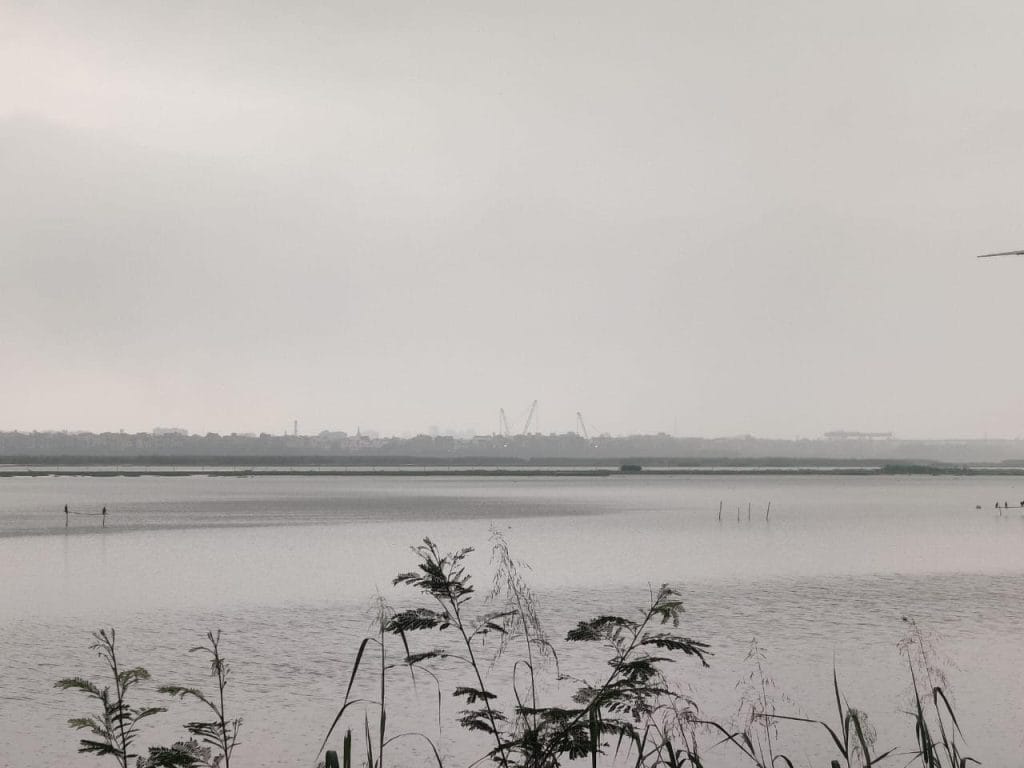
In November 2024, Roy said he had a troubling encounter at the sanctuary. During a winter survey in November 2024, he spotted five migratory bird species along the Yamuna’s banks in the sanctuary. When he tried to access the eastern zone—as he has for the past 25 years—three sanctuary security staff stopped him, despite his having a valid ticket. He claimed they assaulted him, forcing him to call the police helpline. A rescue team arrived, Rai added, but despite filing written complaints to the station house officer, the divisional forest officer, and the district magistrate, he received no response. ThePrint has seen his handwritten complaint to the SHO, but no FIR was registered.
“Instead of protecting wildlife, the sanctuary’s management has become a racket,” Roy alleged. “And no one seems ready to clean it up.”
ThePrint emailed DFO Srivastava about allegations of mismanagement, but no response was received to this or to follow-up calls. This report will be updated if a response is received.
It was not until 2009 that things started to go downhill. That year, 6,803 trees were cut overnight for the construction of Mayawati’s Rashtriya Dalit Prerna Sthal and Green Garden adjoining the park.
The fall begins
The sanctuary’s eastern edge is scarred by high-tension cables that emit a constant, low buzz. It doesn’t seem to bother the visitors dancing for reels or posing for photos by the birdless water.
“There should be more places to sit,” a girl said to her friend, gazing at the water. “It’d be so nice to eat pakodas here in the rain.” Another visitor inadvertently steps into cow dung and shrieks.
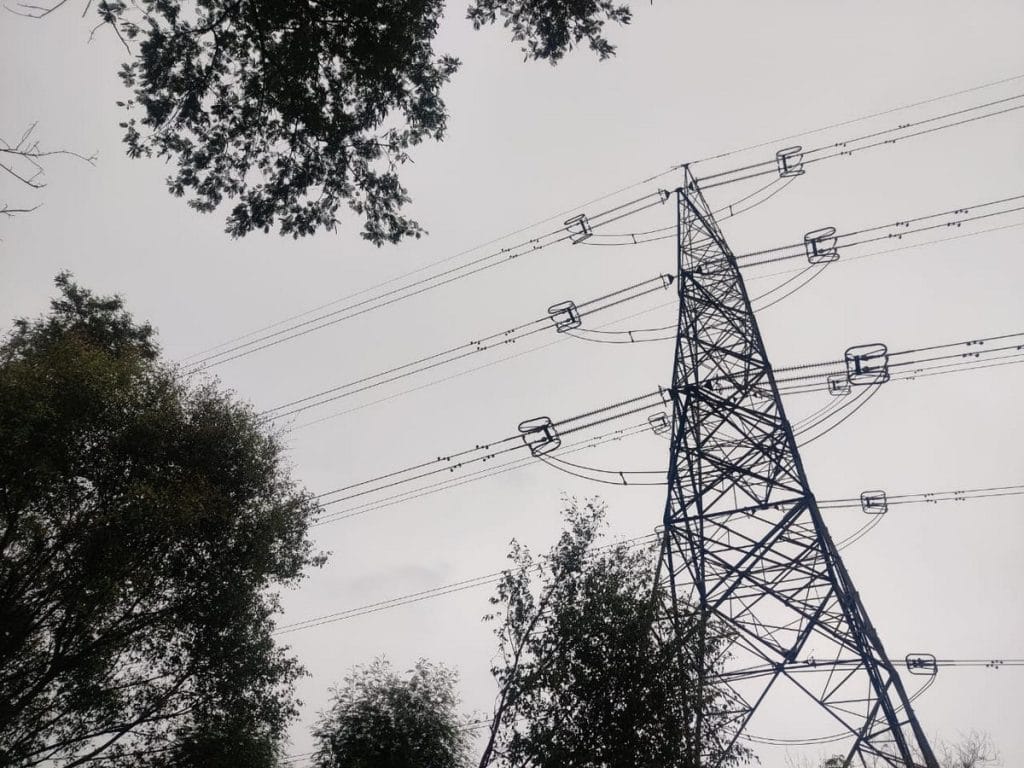
But there was a time when Okhla Bird Sanctuary was virtually pristine. Arya recalls floodplains open to the river, a flourishing wetland with good water levels and dense tree cover. Once a haven for over 20,000 migratory waterbirds, it sat like a jewel on the East Asian Flyway–a critical stopover for species journeying between Central Asia and the Indian subcontinent.
It was not until 2009 that things started to go downhill. That year, 6,803 trees were cut overnight for the construction of Mayawati’s Rashtriya Dalit Prerna Sthal and Green Garden adjoining the park. These trees were between 50 to 100 years old and formed part of a deemed forest. Many were species typical of the Yamuna riverine ecosystem, including neem, peepal, babul, ashoka, mango, and gulmohar.
“By morning, not a single tree stood. All those beautiful trees where golden orioles nested had vanished. Nearly 30 to 40 species lost their habitat in a single night. That stretch was among the finest I had ever seen,” Arya added ruefully.
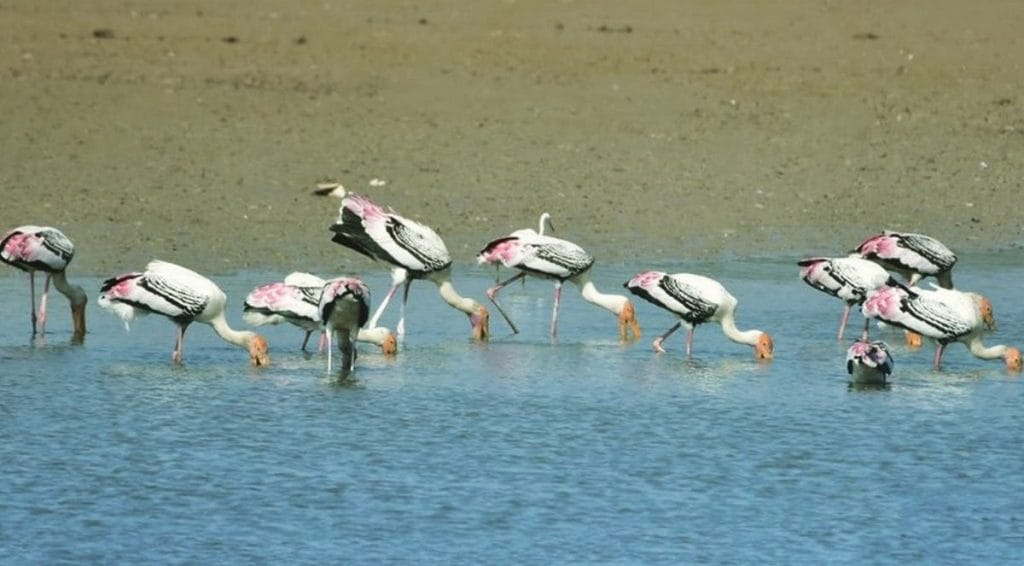
From forests to court
In place of native species, flowering and canal trees have now come up near the bird sanctuary. Shrubs line the paths, far from the canopy cover that once stood here.
The matter reached the Supreme Court some 15 years ago, but little has changed on the ground. Back then, Arya and another petitioner argued that the tree felling for the Dalit Prerna Sthal violated the Environment Protection Act and would damage the sanctuary’s ecology. Uttar Pradesh officials, however, maintained the cleared site lay outside the sanctuary’s legal boundary.
In 2010, following Supreme Court directions, Noida authorities submitted three environmental impact studies—one by the Salim Ali Centre for Ornithology and Natural History (SACON), another by the Wildlife Institute of India (WII), and a third vetted by IIT Delhi.
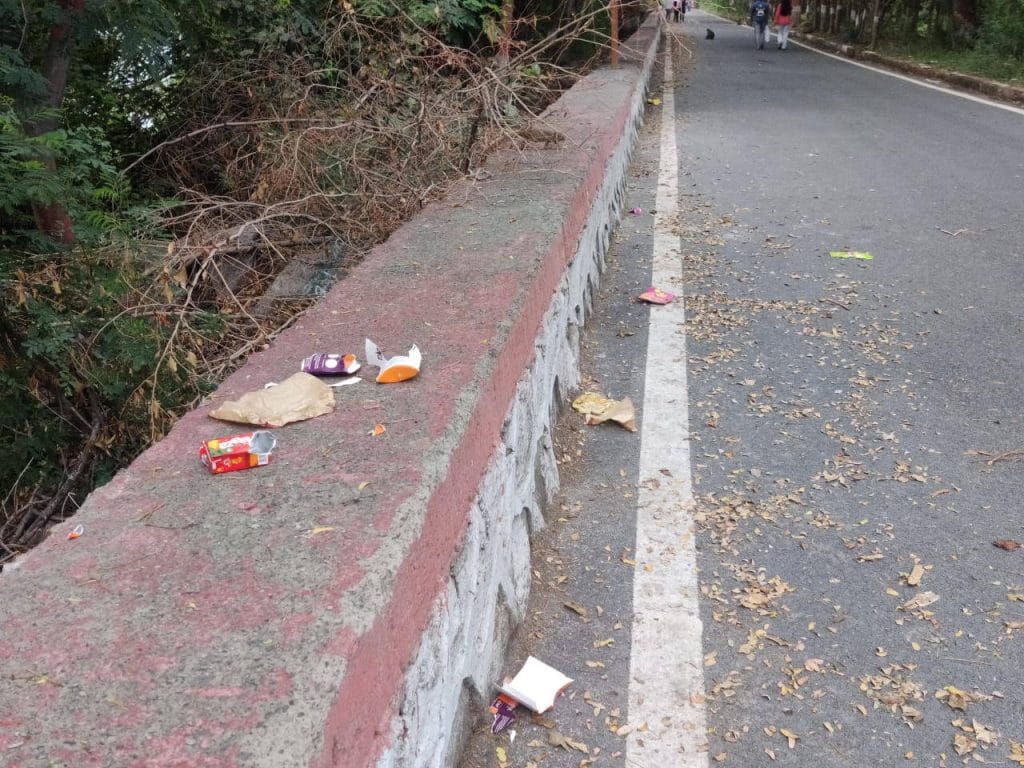
In its final judgment, the court noted that “SACON, in its report practically gave a clean chit to the project,” saying the cleared area lay outside the wetland zone and did not disturb the sanctuary’s core habitat. The other studies broadly echoed this view. The court allowed the project to proceed, with conditions such as limiting paved surfaces and planting dense native tree cover near the sanctuary. But it added:
“We would also like to point out that the environmental impact studies in this case were not conducted either by the MoEF or any organization under it or even by any agencies appointed by it. All the three studies… were made at the behest of the project proponents and by agencies of their choice.”
Arya still questions the credibility of these reports.
“The report is completely cooked up. Who in the world can count exactly 353 bird species in thick fog and that too without any optical aid? It’s absurd. These reports were used to convince the Supreme Court that all ameliorative measures would be implemented, but none of that has happened,” he argued.
The number of birdwatchers has dwindled. Concurrently, an increase in casual visitors, including picnickers, seems to have disrupted the ecosystem—litter and noise followed
-Wing Commander (Retd) Vijay K Sethi
He added that while they argued their case in court, they couldn’t submit a counter affidavit from an expert with credentials stronger than SACON or WII—institutions the court was more likely to trust.
Since the mass tree felling and the emergence of an illegal colony on the western edge, Arya says the sanctuary has suffered greatly.
“The forest department hasn’t done its job properly in the last decade. The bird populations have drastically declined; species that were once in thousands, like weavers, are now just a handful,” he added.
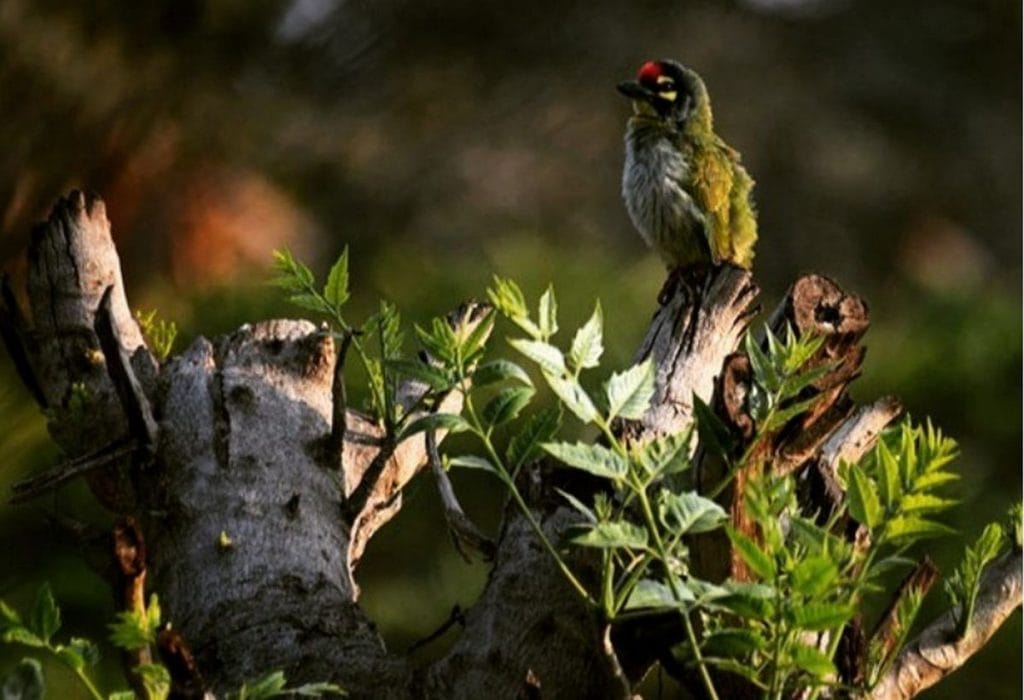
While the sanctuary website claims there are over 320 bird species here, data from the Asian Waterbird Census (AWC), conducted each January, suggests otherwise. In 2019, the sanctuary hosted 12,211 birds across 63 species. This dropped to 8,776 (62 species) in 2020 and 8,068 (73 species) in 2021. In 2022, numbers rose slightly to 9,243 birds, but species diversity fell to 47. The 2023 count was 6,083 birds (36 species), and by 2024, it was 3,380 birds across 32 species—a sharp fall in both numbers and diversity.
In 2018, Arya submitted a report via email to Mahesh Sharma, Minister of State for Environment and Forest, on the “Resurrection of Okhla Bird Sanctuary”. He contended that many Supreme Court directions, especially regarding the Dalit Prerna Sthal, remained unimplemented.
His suggestions included implementing WII and SACON recommendations, such as capping hard surfaces at 25 per cent and ensuring 25 per cent green cover. He called for full implementation of Supreme Court orders, including expanding the sanctuary’s boundary to the DND Flyway and ensuring NOIDA releases its underutilised allocated funds of Rs 34-50 crore for ecological restoration.
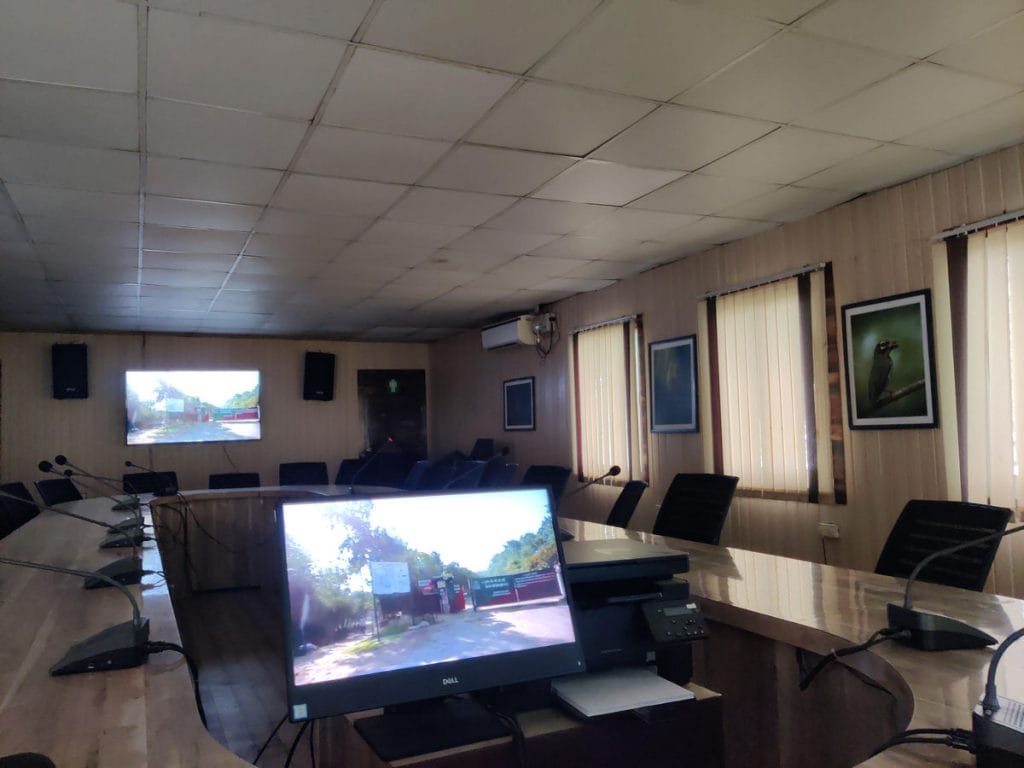
“One of the most alarming threats to the OBS is the stretch of high-tension power lines running along its eastern boundary. These lines emit electromagnetic radiation continuously, which poses serious harm to both wildlife and humans. Experts believe that the solution is both clear and feasible: the cables must be taken underground,” read his action plan.
According to Arya and other environmentalists, light pollution, noise, and mismanagement now threaten the sanctuary’s existence.
“There’s an 11 KV high-voltage electricity line running just outside the park, and while no formal studies have been done, it’s possible that it’s had an impact on the local bird species,” said Girish.
Today, the sanctuary caters more to casual visitors than to birds or birders.
“The number of birdwatchers has dwindled. Concurrently, an increase in casual visitors, including picnickers, seems to have disrupted the ecosystem—litter and noise followed,” said Sethi, adding that unpredictable barrage gate operations drain water levels at critical times, further discouraging birds and those who love to watch them.
Okhla Bird Sanctuary isn’t the only one unravelling. It was once part of a vibrant wetland network in the NCR. Okhla, Dadri wetland, and Dhanauri wetland were the holy trinity for birders. But now they all tell a different story of neglect, encroachment, and ecological collapse.
Also Read: Noida’s best-kept secret—its Mughal, Maratha, Bhagat Singh history
Fading wings
In the mornings, the sanctuary attracts long-distance walkers. By afternoon, it turns into a popular spot for couples, sitting every few hundred metres along the paths. Birds are still present, but not in the numbers once seen, especially during the summer.
The wetlands, grasslands, and thorny scrub once hosted Critically Endangered vultures and Vulnerable species such as the sarus crane and Indian skimmer. Birdwatchers recall flocks of teal, shoveler, pintail, and bar-headed geese filling the skies during winters in the 1980s and ’90s.
“The number of migratory birds has dropped drastically–down to just 10 per cent of what it once was,” said the birdwatcher who requested anonymity. “We no longer see Endangered vultures or many of the Vulnerable species that were once common here. Earlier, flocks of 20,000 birds would arrive; now, only a fraction return. Even resident bird populations have declined sharply.”
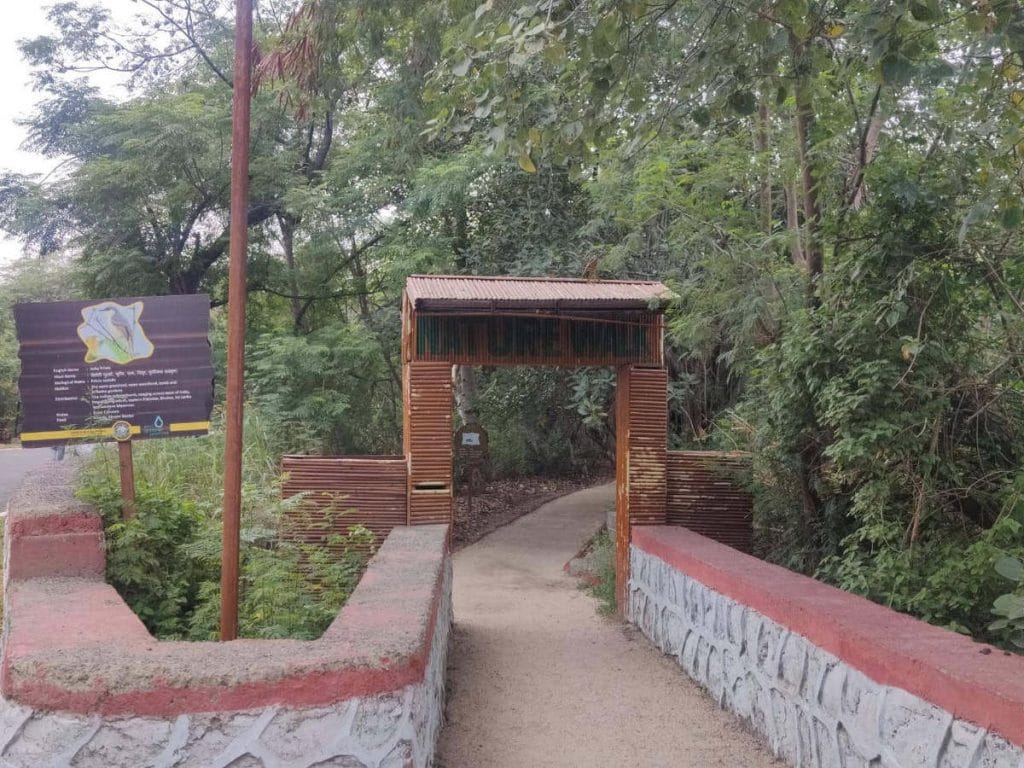
Arya agreed that numbers of both migratory and resident breeding birds have dropped dramatically.
“The golden oriole was once a regular breeder at Okhla Bird Sanctuary. Nests were photographed between 2006-2008— there would be seven or eight nests each season,” he said. “I’ve photographed them in the peak of summer–45 degrees Celsius–with chicks in the nest. But now, not a single sighting, not one nest has been reported in years.”
Meanwhile, core ecological threats have mounted. Invasive species like water hyacinth spread unchecked.
“I live in Sector 77, near a small, empty plot where sewage water flows in. I happen to do most of my birdwatching right here,” said Rai sarcastically, highlighting the sanctuary’s deteriorating condition.
It used to be such a wonderful place. These days, whenever I do visit, I come back feeling depressed. Honestly, it’s painful for me to even be there
-Anand Arya
But Okhla Bird Sanctuary isn’t the only one unravelling. It was once part of a vibrant wetland network in the NCR. Okhla, Dadri wetland, and Dhanauri wetland were the holy trinity for birders. But now they all tell a different story of neglect, encroachment, and ecological collapse.
“Okhla, as a birding hotspot, is dead. Dhanauri is heading fast towards being a dead hotspot,” Arya said.
The Dadri wetlands, especially Beel Akbarpur, once teemed with wildlife. But the site fell into decline after land acquisition by Ansal API, whose promised construction never materialised.
Of the three, Dhanauri is in the best condition. With its year-round birding and a remarkable population of Sarus Cranes, it remains ecologically vital. But the window to protect it is closing rapidly.
“Until February 2020, Dhanauri Wetlands mirrored Okhla’s prime. It’s one of the best places to bird anywhere in India. Even in April and May, I’ve enjoyed birding there. But post-COVID, habitat degradation has accelerated due to neglect of wetlands per se and the commencement of construction by YIEDA (Yamuna Expressway Industrial Development Authority) in the surrounding area,” said Arya.
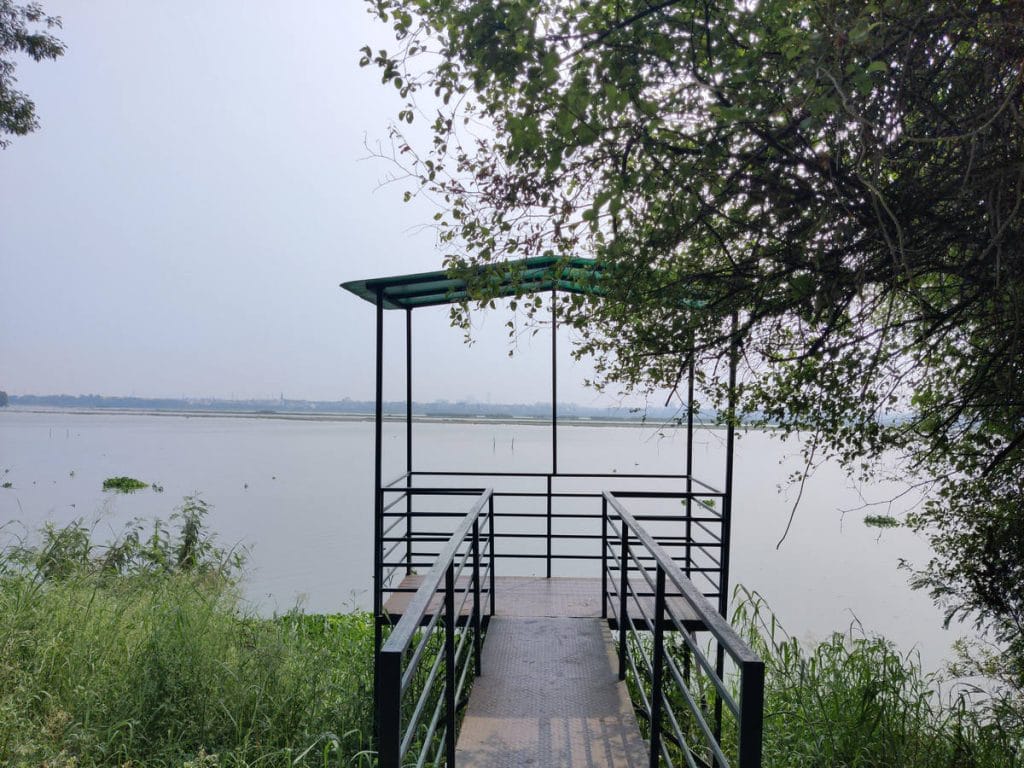
Here, too, environmentalists point the finger at systemic failure.
In 2015, the NGT ordered Dhanauri to be notified as a wetland within three months. That never happened. In 2019, the environment ministry directed the UP government to declare Dhanauri a sanctuary and a Ramsar site. Again, no action.
More critically, the 2020 environmental clearance for the Jewar airport project came with a condition: Dhanauri must be declared a sanctuary/community reserve and a Ramsar site, as advised by the WII’s conservation plan. That condition, too, remains unfulfilled.
“When I saw nothing happening, I went to the NGT in October 2023. And as usual, the courts are just sitting—tareekh pe tareekh they give. But in this case, they have no option. Environmental clearance is sacrosanct, as per multiple Supreme Court judgments. NGT must force the government to comply. The case is now listed for final hearing in July. No more delays, I hope,” said Arya.
For many birders, Okhla is no longer a paradise. The birds are fewer, the magic is gone. It’s no longer a secret garden where a single visit could spark a lifelong love for nature.
“It breaks my heart to see the state of OBS now,” said Arya. “I’ve stopped going altogether. It used to be such a wonderful place. These days, whenever I do visit, I come back feeling depressed. Honestly, it’s painful for me to even be there.”
This article is part of a series called ‘Noida@50’. Read all articles here.
(Edited by Asavari Singh)



